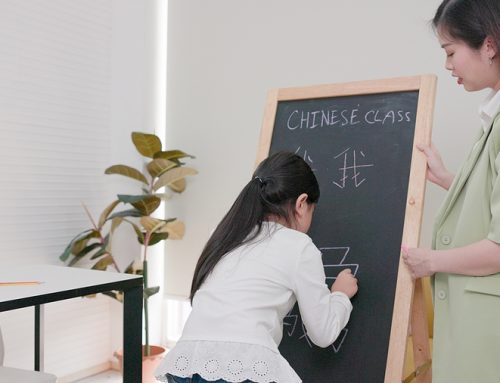Earlier this year, MOE has announced the rollout of e-Oral or Video Conversation that will replace Picture Description starting from the 2017 PSLE Exams. Students will be required to watch a 1 minute video and express their views and opinions relating to the themes.
In an exploratory paper, the Singapore Examinations and Assessment Board (SEAB) proposed to extend the use of Mother Tongue languages as a living, everyday interactive language via the use of ICT. Therefore, the MOE has announced that videos will replace pictures as test stimulus in oral assessments as it is a better medium to better portray real-life situations and provides authentic contexts for oral conversation and discussion.
Revised 2017 PSLE Chinese Oral Format
| Paper 3 Components 口试与听力 |
2016 PSLE | 2017 PSLE (NEW) |
|---|---|---|
| Reading Passage 朗读短文 | 10% | 10% (on-screen) |
| Picture Description 看图说话 | 10% | 15% (Video Conversation / e-Oral) 看录像会话 |
| Conversation 会话 | 5% | – |
| Listening Comprehension 听力理解 | 10% | 10% |
| Total Percentage | 35% | 35% |
Although the total percentage for Paper 3 (Oral + Listening Comprehension) remains at 35%, there are slight changes to the Oral components. Reading Passage element will still remain (and slightly enhanced to on-screen reading), while the Picture Description + Conversation elements will now be replaced by “Video Conversation” or e-Oral.
Students will be given 10 minutes to prepare – they will have to plan their time to review both the reading passage (on computer screen), and the video for oral within that timeframe. Upon entering the exam room, they will then proceed to read the passage on screen, and watch the video once. Subsequently, the examiner will ask 3 guiding questions related to the theme in the video –
- A question about the content of the video – what happened, what did you observe?
- e.g. Tell me about an event relating to “helpfulness” that you have seen in the video.
- The student’s thoughts/views/comments related to the theme, what did you learn?
- e.g. What helpful deed have you done for your friend and what did you learn?
- To share a similar/relevant experience, or to further extend the theme to society.
- e.g. How do you think the school should encourage pupils to care for each other?
Feedback from parents and students
Students have actually preferred this new format as it allows for more ‘free play’ and is more relevant to daily life activities. About 85% of the students agreed that the video stimulus made the oral test more interesting and engaging as compared to a still picture stimulus. Parents, however, are concerned about the lack of reference materials in the market, and also whether we are adding more stress (to have to remember the video contents) to an already stressful paper.
An MOE spokesperson urged parents not to worry as fundamental oral techniques still remain the same, regardless of medium, and indicated that standardised video resources from MOE have already been disseminated to the schools & teachers in order to help students prepare for the new format. Most schools are already starting to prepare their students from Primary 4 and 5 onwards for this change by either printing out video strips or having practice dates for e-Oral.
How can you help your child to prepare?
- Practice with everyday pieces of information (e.g. news articles, brochures, posters, advertisements etc). Make it a habit to notice such information in your daily commute and have a casual conversation with your child. Comment on the character’s behaviour, what they have learnt, and share a relevant or similar experience. Let them get used to developing an opinion on various topics.
- Expose, Expose, Expose. Expose them to different mediums of communication. Besides reading (which is still very important), try other ways for e.g. switch on the radio to the Chinese channel so they are used to listening to Mandarin a conversational setting, watch a Chinese feature or travel show with them, or send them a phone message in Chinese. Just a little exposure everyday will raise their general level of awareness of the language.
- During the oral, remind your child to listen and watch carefully, try to remember certain keywords or phrases that have been used during the video. Also to pay attention to the main theme and sequence of events shown in the video.
- Don’t panic. Remember whether it’s a picture description or video oral, it is just a medium. The objective of the oral is the same – to allow students to express their comments and ideas in a guided form. Build up their spoken Mandarin foundation with good phrases and solid sentence structures and no matter what syllabus changes are to come, they will be able to confidently adapt.
Also read: How to help your child learn Chinese Characters
Sources:
http://www.zaobao.com.sg/special/article/education/story20160309-590367







